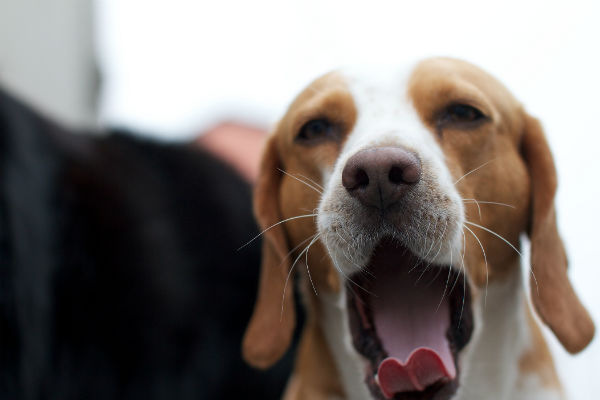Patella luxation in dogs is quite common, although if it is mild it does not excessively affect their quality of life. Patella luxation or kneecap dislocation in dogs occurs when the animal’s kneecap moves out of its natural position on the thigh (femur). When this occurs, the kneecap can only be returned to its normal location once the quadriceps muscles are relaxed.
The patella is a small bone that is lodged in a groove (trochlea) of the femur in the knee. This is essential for the proper functioning of the limb, and in the case of patella luxation, the patella dislodges from the trochlea.
Types of Patella Luxation
Most of the time it comes out towards the internal (medial) side of the knee and in less than 20% it occurs towards the external (lateral) side. It occurs especially in small dog breeds. It is due to poor alignment of the limb as a consequence of poor development of the animal, which may affect one or both extremities. It is a congenital pathology. Sometimes it can be caused by trauma.
Depending on the severity of the luxation, patella luxation can be classified into four (4) grades:
- Grade I: The kneecap is manually dislocated but returns to its normal position when pressure is released.
- Grade II: the patella is dislocated manually or spontaneously with knee flexion. The patella remains dislocated until it is manually reduced in extension or the tibia is rotated in the opposite direction to the dislocation.
- Grade III: The patella remains luxated most of the time but can be manually reduced in extension or the tibia is rotated in the opposite direction to the dislocation. Flexing and extending the knee causes it to dislocate again.
- Grade IV: The patella always remains dislocated and cannot be replaced. In cases of grade II, III and IV surgery is required to correct the dislocation.
So, when a dog has a dislocated knee, it is common to keep its hind legs up as soon as it has a chance. This condition is one of the most frequent knee ailments in all types of dogs, but there are certain breeds with a greater predisposition to knee dislocation, such as:
- Yorkshire terrier
- Pomeranian
- Pekingese
- Chihuahua
- Boston terrier
As you can see, these are small dog breeds. In addition, the percentage of risk of knee dislocation is higher in females.
Symptoms of Patella Luxation
Actually, in these types of conditions the symptoms depend a lot on the severity of the disease, as well as its extension over time and the level of arthritis. It is normal for a dog with patella luxation to have abnormal and “dragged” movements in the hind legs, limp or occasional jumping.
Although it may seem otherwise, the dog hardly feels pain when the patella moves out of place. You only feel pain and discomfort when the patella comes out completely from the ridges of the femur.
Causes of Patella Luxation
Generally, patella luxation is the result of trauma or genetic malformation. The symptoms begin to be visible from the four months of age of the affected puppy.
Being a genetic disease, there is no way to prevent or avoid luxation in dogs, although there are ways to treat it and give the dog a good quality of life.
Diagnosis and Treatment of Patella Luxation
Patella luxation in dogs can be diagnosed through various tests, such as knee, hip, and leg radiographs. These can reveal an unusual groove or curve in the femur. On the other hand, a sample of patella fluid (synovial fluid) can also be taken, which will show an increase in mononuclear cells. In addition, the vet performs a touch analysis to assess the patella’s ability to move.
Once a patella luxation is diagnosed in dogs, medical treatment is really very ineffective. For the more advanced and more serious cases, surgery is best, which can correct the affected bones and restore the natural patella movement. In up to 90% of dogs with knee dislocation, the limp disappears after the operation.
With surgery, the patella can be fixed on the outside of the bone, preventing it from sliding inward. The groove of the bone is deepened so that the patella fits better.
How does a dog with patella luxation live?
After a successful patella luxation surgery on a dog, the post-operative stage will come. It is necessary to carry out exercises of walking with leash in a calm way for a month and to carry out annual reviews to verify the progress. Despite the successful operation, the recurrence rate of patella luxation in dogs is very high, almost 50%. Of course, in case of relapse, the new displacement of the patella will be less than that of the first time.




